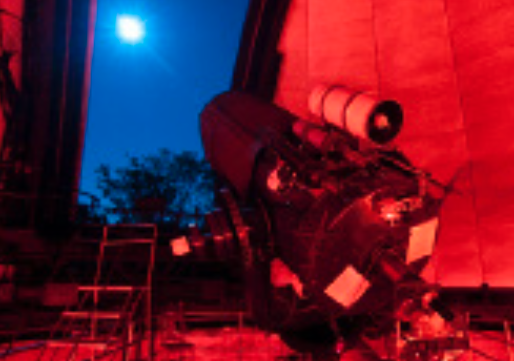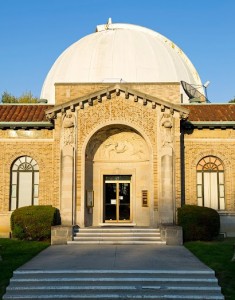By Julia Snyder, Transcript Reporter
Since the groundbreaking ceremony in 1923, Perkins Observatory has been a significant landmark on Ohio Wesleyan’s campus.
Perkins Observatory was founded by Hiram Perkins, a mathematics and astronomy professor at OWU from the late 1800s into the early 1900s. After Perkins retired, he dedicated himself to the planning of the observatory.
It wasn’t completed unitl after Perkins died. In 1931, the telescope was finished and named the third largest telescope in the world, measuring 69 inches in diameter. Since then, it has been moved to Arizona. The observatory now has has a telescope that is 32 inches in diameter. Today, Perkins Observatory offers public programs, day and night for those interested in astronomy.
Tom Burns, director of Perkins, has been an English professor at OWU since 1993. He usually leads the programs.
“On a clear night, we’ll pack the place, our fire code limit is 90 people, 10 of whom are usually going to be volunteers, … so we’ll bring 80 members of the public or students from OWU or whatever together on a clear night,” Burns said. “Even on cloudy nights, we’ll even get near capacity because we have some school group come in or something like that.”
On a clear night, the program will begin with a talk lead by Burns titled, “Everything you’re going to be seeing in the telescope and what it all means.” He said he does this so that when people look through the telescope, they know more about what they’re seeing.
“Then we’ll release people to the telescopes, not just the big one in the dome, but a bunch of telescopes from the Columbus Astronomical Society that we have out on the front lawn,” Burns said.
“We’ll just keep rotating people through those telescopes until everybody falls over or goes home. You stay as late as you want.”
On a cloudy night, he will give an educational tour, show the telescope and open up the dome if the weather permits.
“It really is kind of an introduction to practical stargazing and how fulfilling it can be and in a very practical way,” Burns said. “If people are willing to stick around for the late night portion, then we’ll do the ghost story. I always like doing it when we have OWU students there.”
Students also use Perkins Observatory for research projects, led by Robert Harmon, a physics and astronomy professor at OWU.
“I have a smaller 14-inch diameter telescope that sits inside of the dome that is on the observing deck. I use that telescope with students for research projects, like those in the Summer Science Research Program,” Harmon said. “I have students gather data with that telescope on a star that has star spots on it and we study those star spots. We’ve been gathering data on this since 2006.”
Burns said when he first started teaching at OWU, one of his goals was to get every student, regardless of major, into the observatory at least once before they graduated.
“I think a look at the nighttime sky informs any way that you look at the world around you,” he said.


